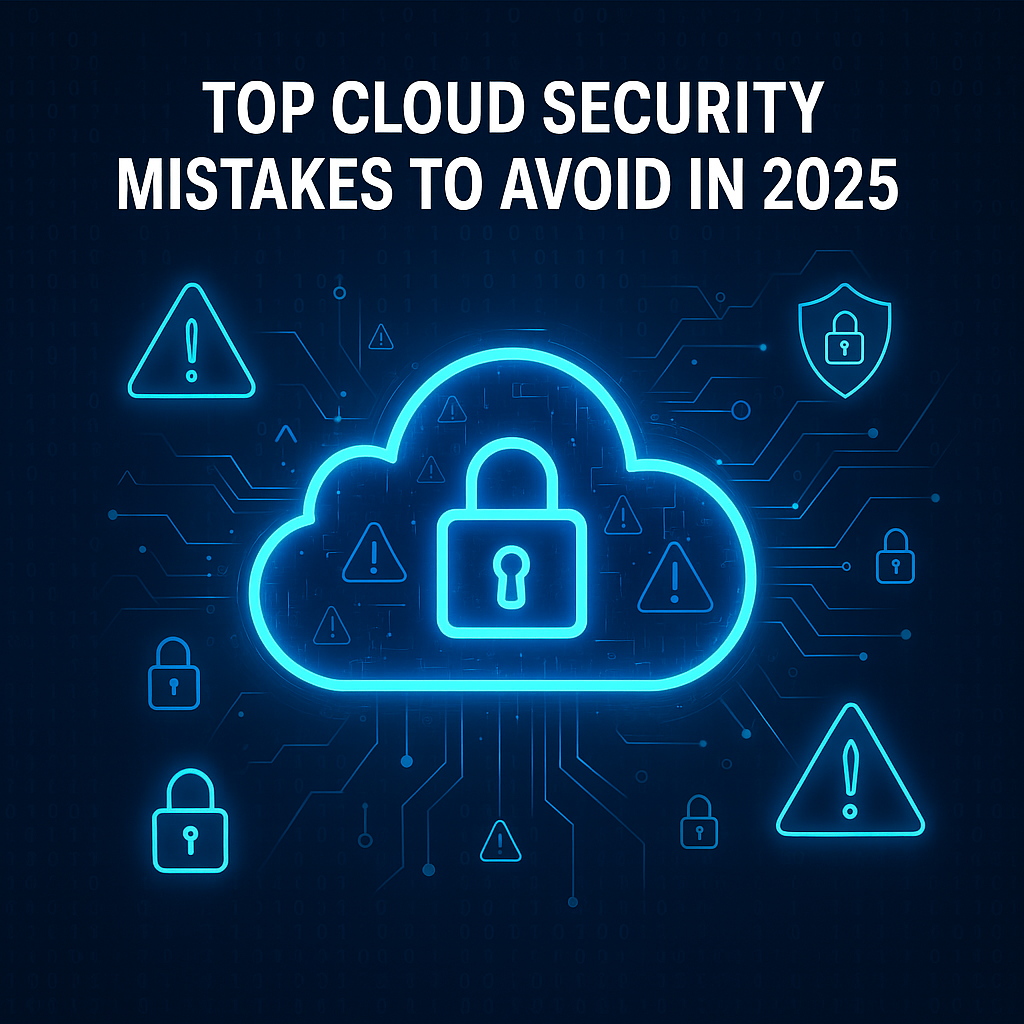As more businesses migrate their workloads to the cloud, cloud security mistakes have become one of the biggest risks to data protection. A single misconfiguration or oversight can expose sensitive information to cybercriminals within minutes.
In 2025, most cloud breaches don’t result from weak technology — they happen because of human error. Understanding the most common cloud security mistakes and learning how to prevent them is key to keeping your business safe.
1. Misconfigured Cloud Storage Buckets
One of the most common cloud security mistakes is leaving cloud storage buckets, such as AWS S3 or Google Cloud Storage, publicly accessible. Many organizations accidentally expose sensitive files, customer data, or credentials because of improper configurations.
✅ Fix: Always review your cloud storage permissions. Use Access Control Lists (ACLs) to manage who can view or edit your data. Enable server-side encryption for sensitive information and routinely run configuration audits.
2. Weak Identity and Access Management (IAM)
Poorly implemented IAM policies are a major source of cloud vulnerabilities. Granting excessive permissions or failing to revoke old credentials can create serious security gaps.
✅ Fix: Apply the principle of least privilege, ensuring users only have access to what they need. Implement multi-factor authentication (MFA) for all users, and regularly review role assignments and login histories to detect anomalies.
3. Ignoring Regular Security Updates
Outdated cloud applications, plugins, or containers can quickly become entry points for attackers. Ignoring updates is one of the easiest cloud security mistakes to make — and one of the most dangerous.
✅ Fix: Automate patch management using tools like AWS Systems Manager or Azure Update Manager. Schedule routine vulnerability scans to ensure your system is always up-to-date.
4. No Backup and Disaster Recovery Plan
A surprising number of startups and small businesses neglect to back up their cloud data until disaster strikes. System failures, accidental deletions, or ransomware attacks can lead to permanent data loss.
✅ Fix: Create a comprehensive backup strategy using geo-redundant storage. Test your disaster recovery plan quarterly to ensure quick restoration in case of downtime or data loss.
5. Overlooking API Security
As businesses integrate multiple cloud services, APIs become the backbone of communication. However, unsecured APIs can expose credentials, allow data leaks, and open pathways for hackers.
✅ Fix: Protect your APIs using API gateways, encrypted tokens, and rate limiting to prevent abuse. Regularly update API keys and restrict access based on IP address or domain.
6. Lack of Employee Training and Awareness
Even the most advanced cloud infrastructure can be compromised if employees don’t understand security best practices. Phishing, weak passwords, and accidental data sharing are all common results of poor training.
✅ Fix: Conduct regular cloud security awareness programs. Train employees to recognize phishing attempts, handle sensitive data safely, and follow security protocols. Simulate cyberattacks to measure preparedness.
7. Not Monitoring Cloud Activity
Without real-time visibility, detecting suspicious activity or insider threats becomes nearly impossible. Failing to monitor your cloud environment is a critical cloud security mistake that leaves you blind to potential attacks.
✅ Fix: Enable cloud logging and integrate it with a SIEM (Security Information and Event Management) solution. This helps track and analyze all user activities, alerting you to unusual behavior instantly.
Conclusion: Build a Strong Cloud Security Foundation
Cloud technology has transformed how modern businesses operate, but it comes with new responsibilities. Avoiding these cloud security mistakes is essential to protect your systems, data, and reputation.
In 2025 and beyond, cloud security is not optional — it’s the foundation of your digital future. By combining smart configuration, proactive monitoring, and continuous employee education, your organization can thrive securely in the cloud.
Next:
Beginner’s Guide to Online Security: Stay Safe in the Digital World
